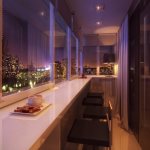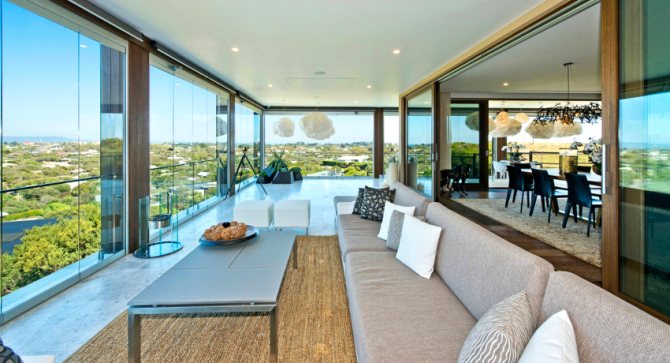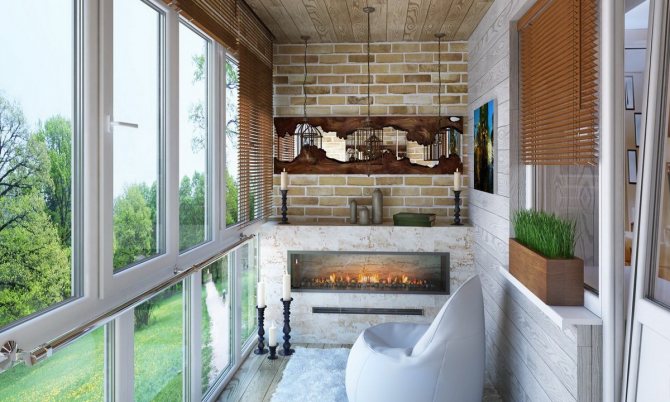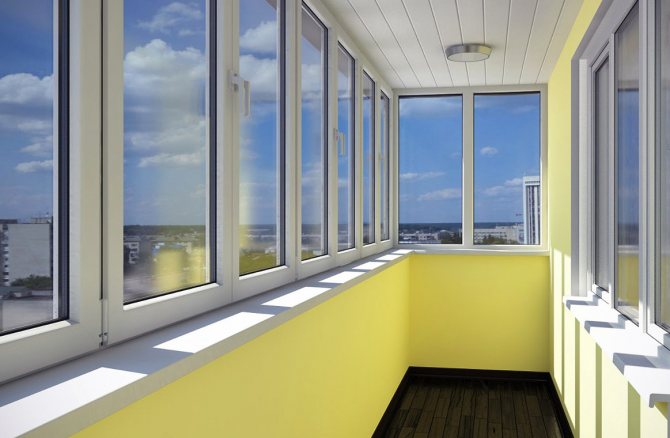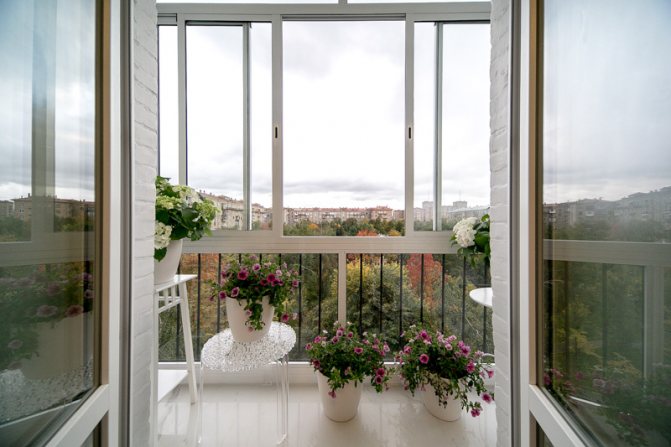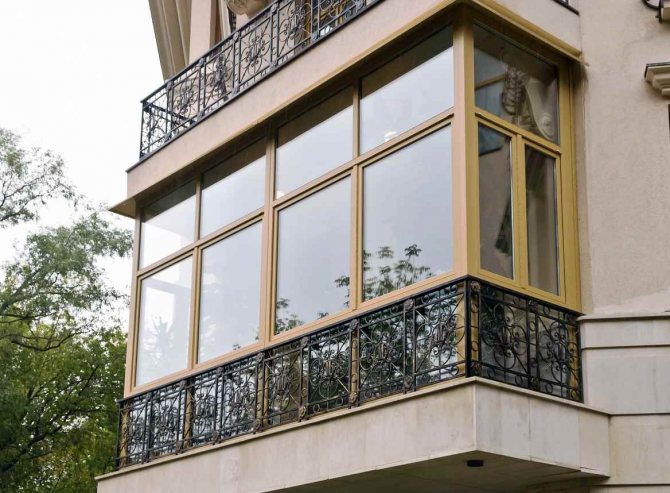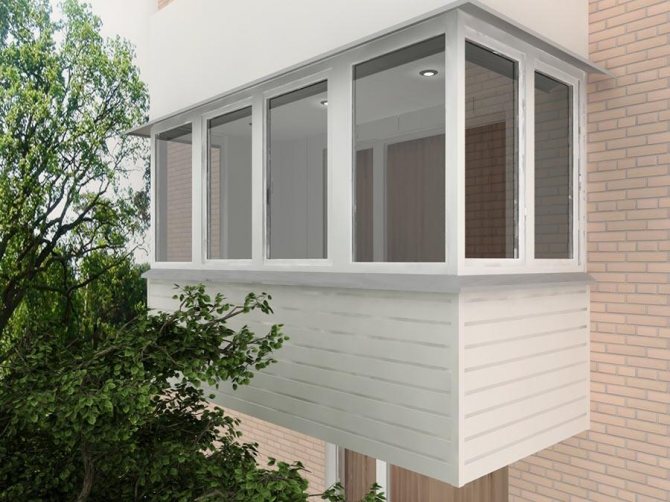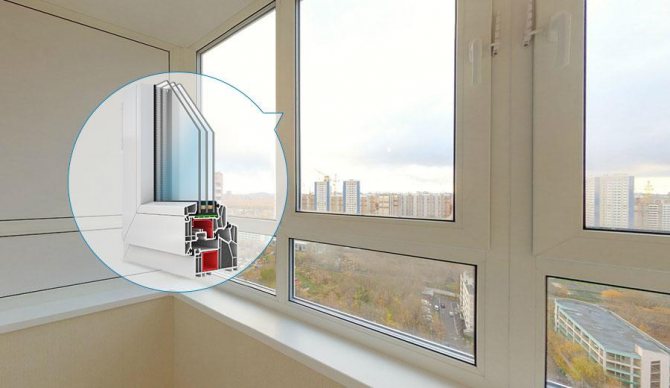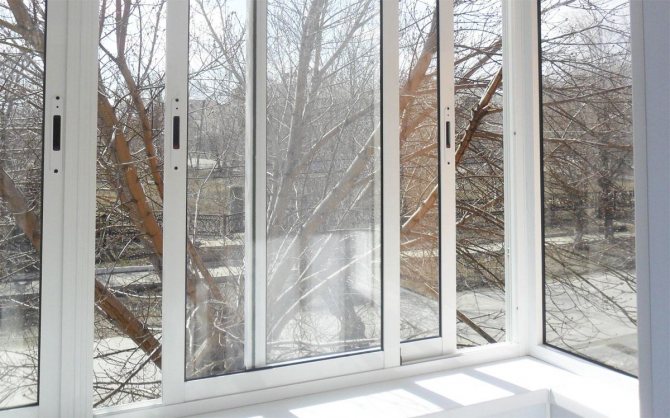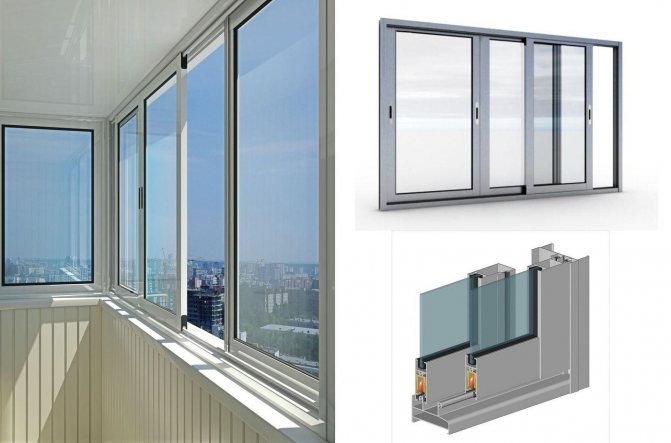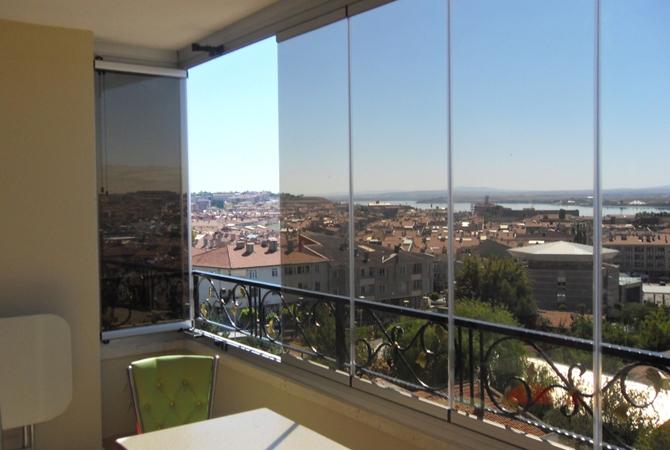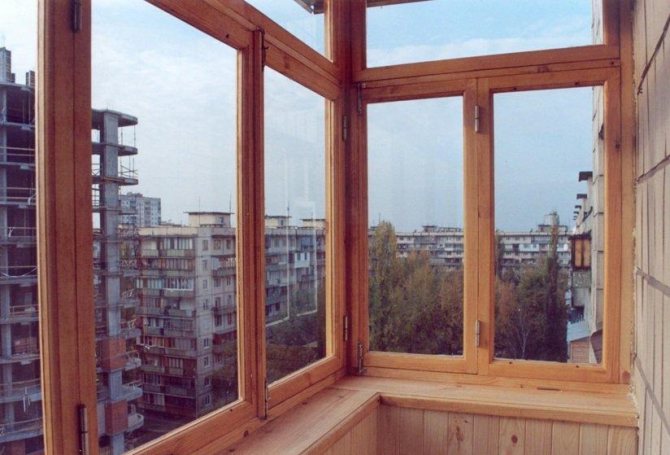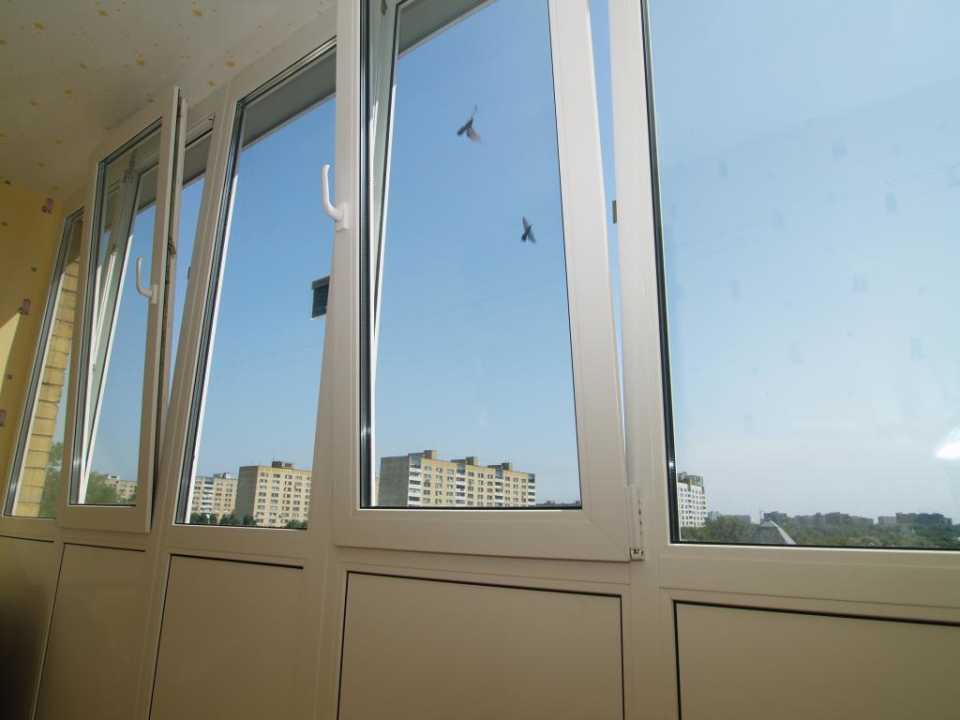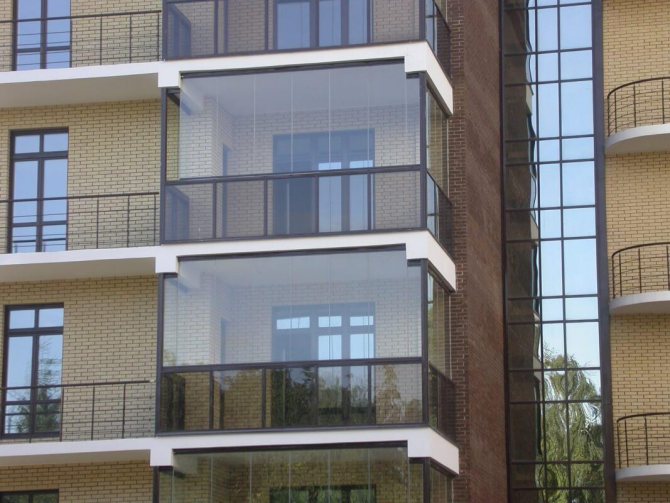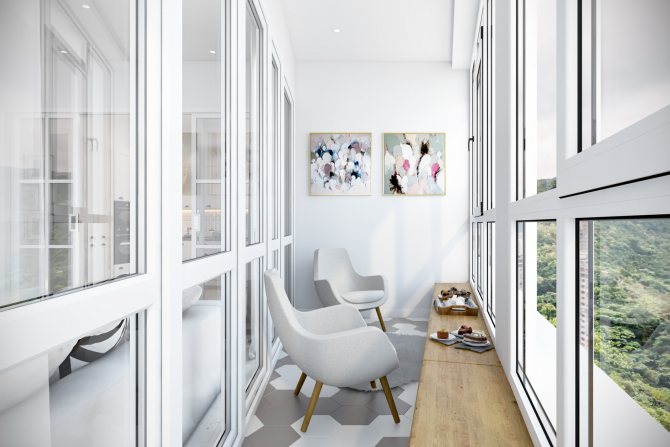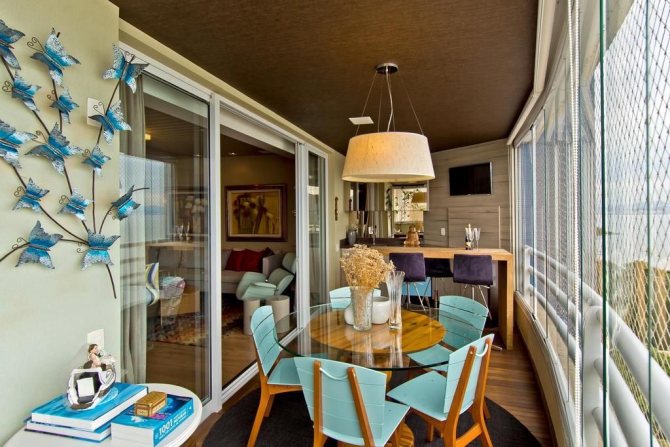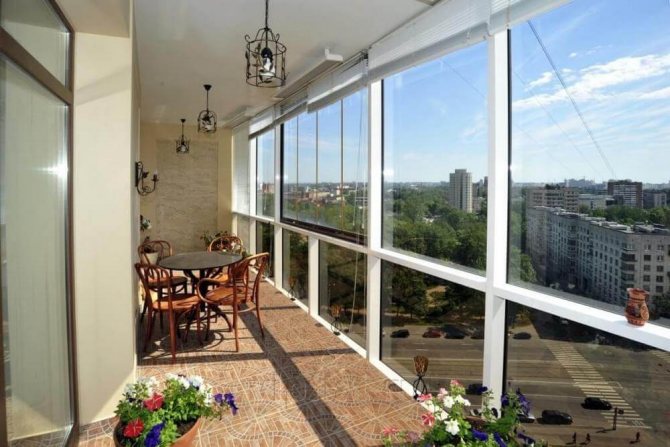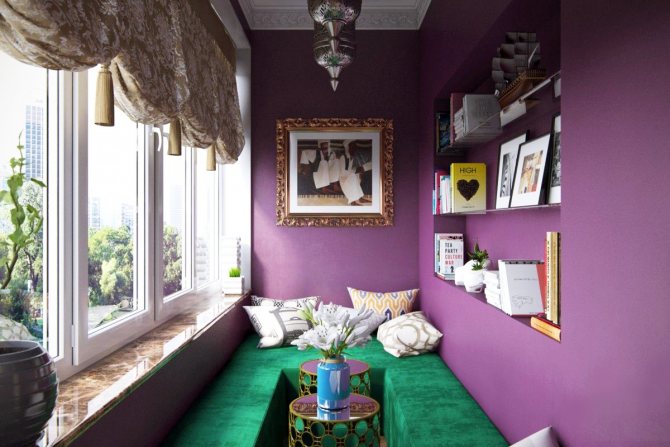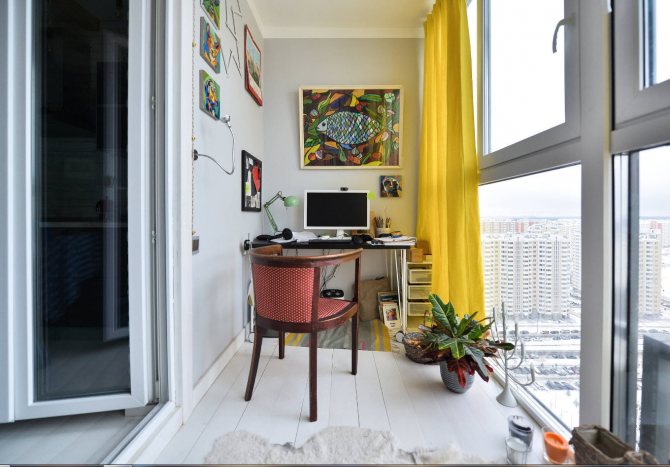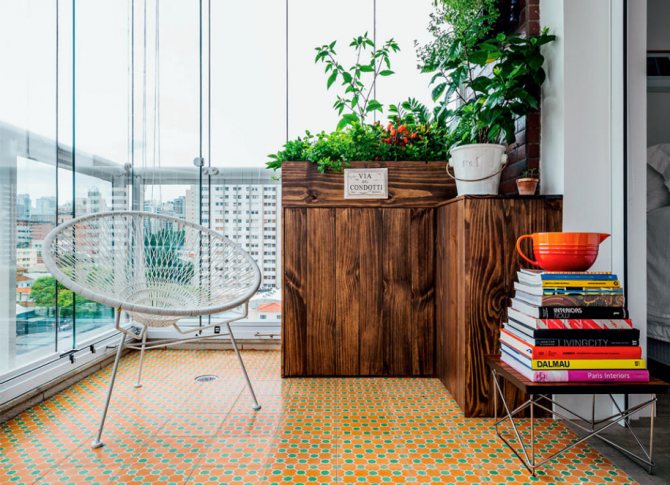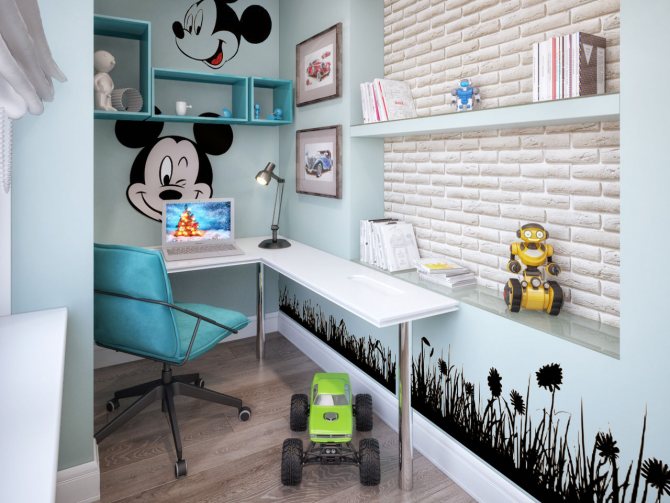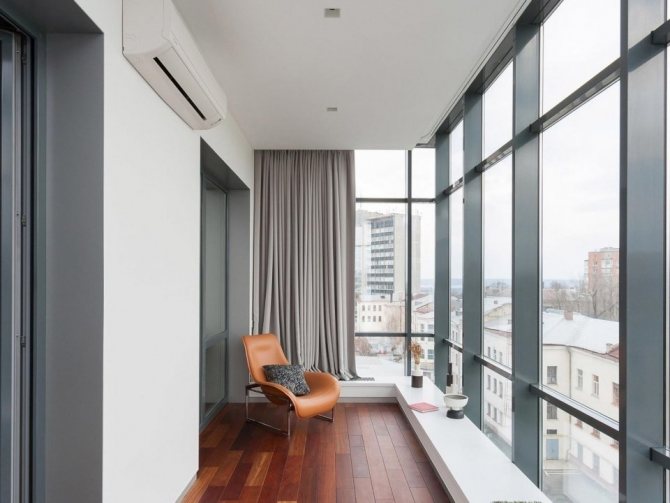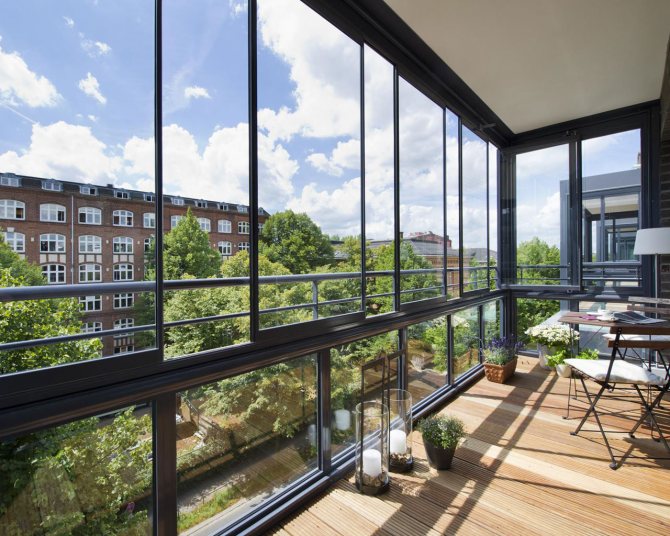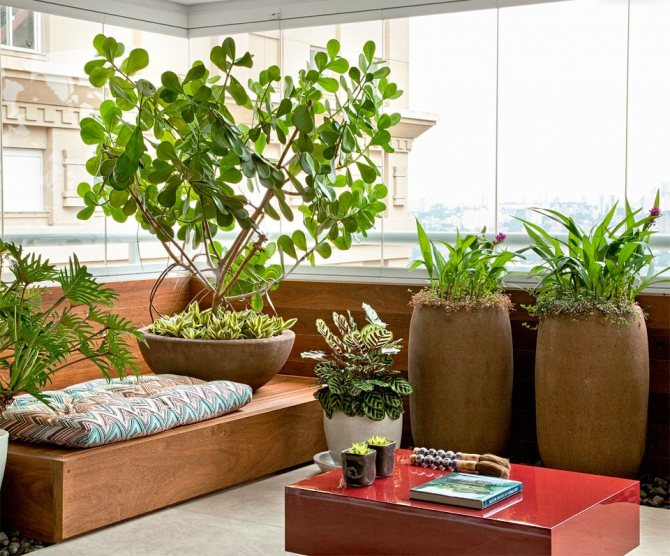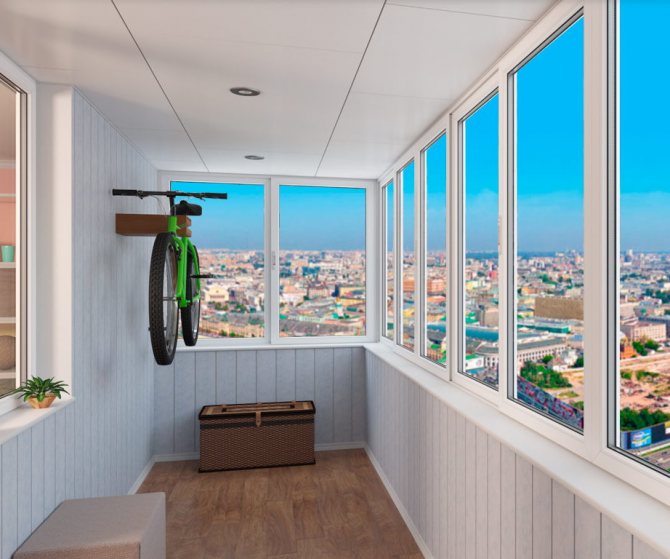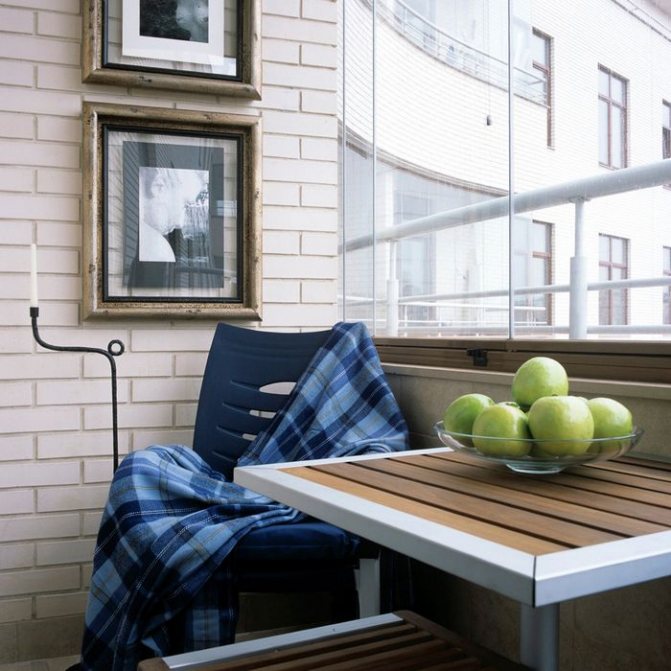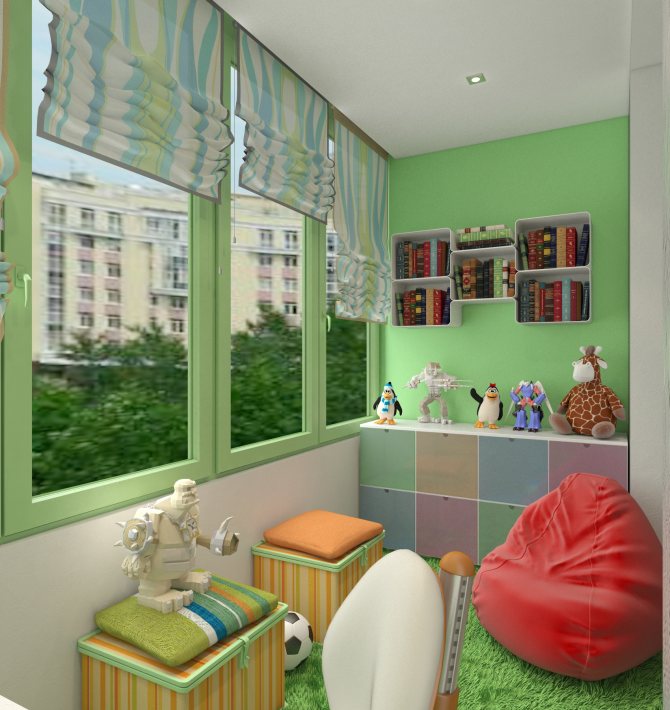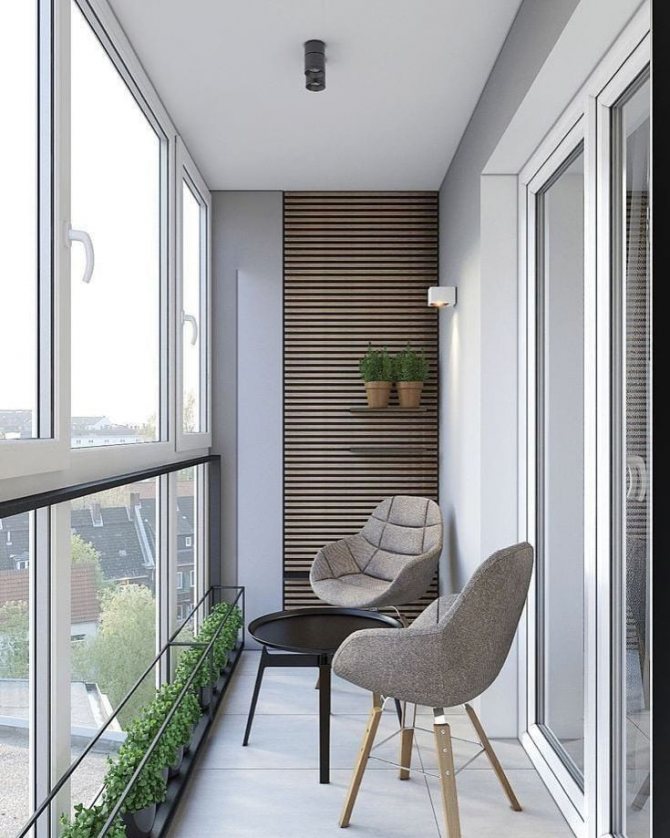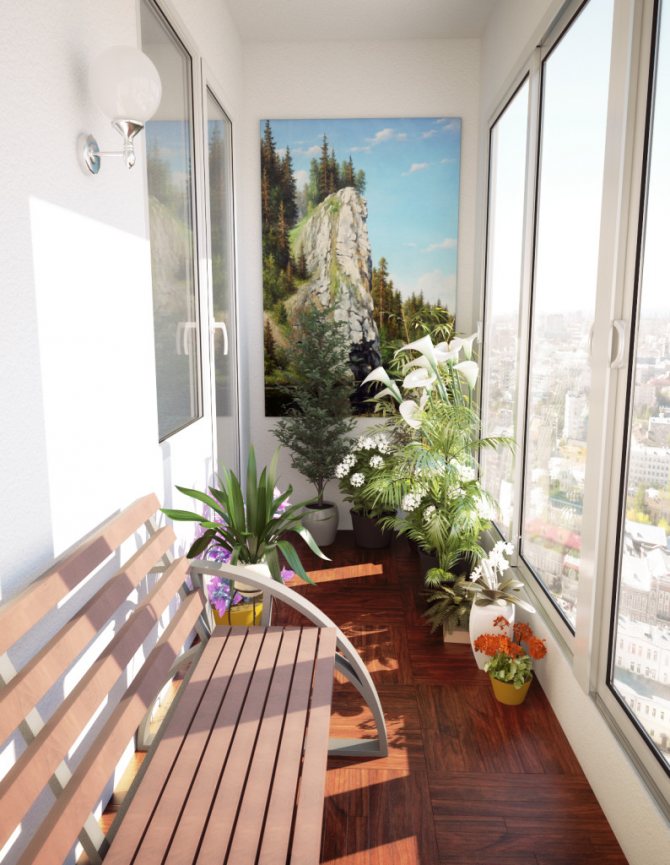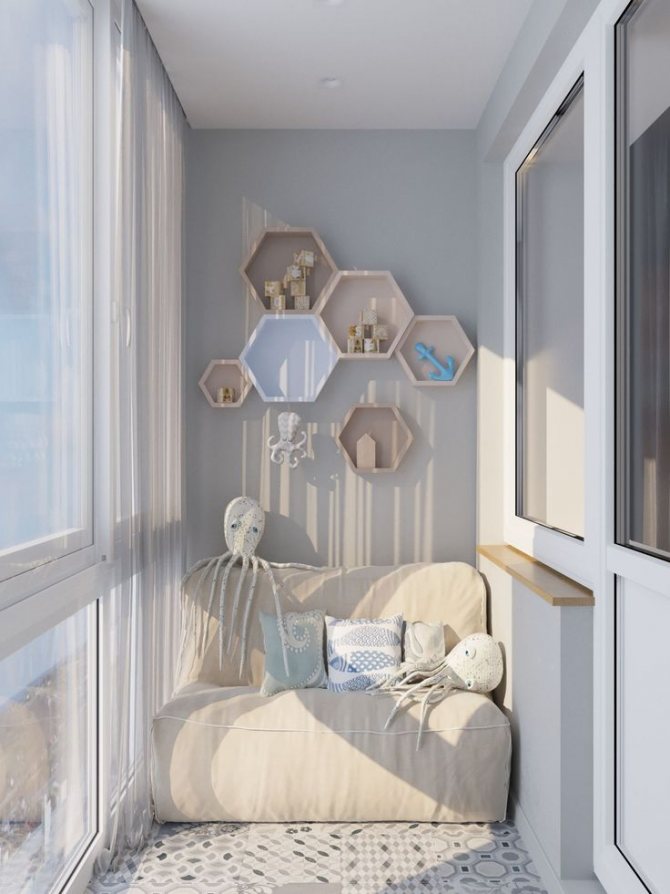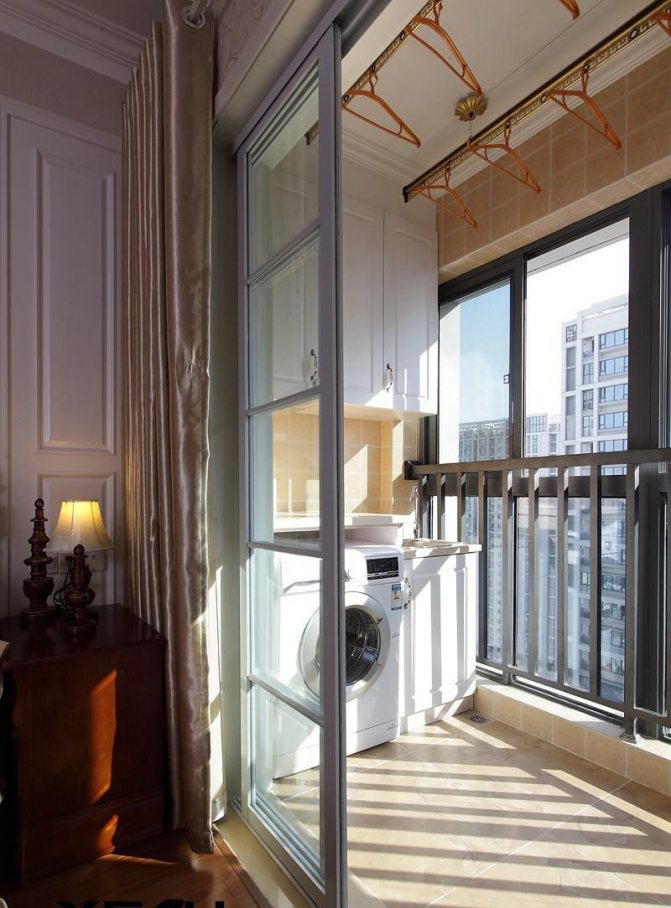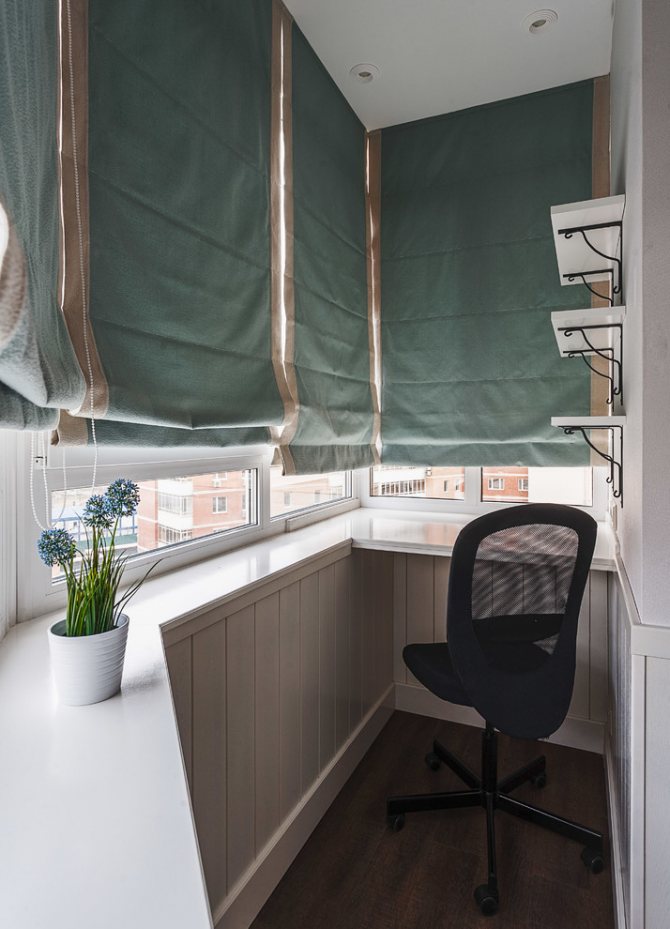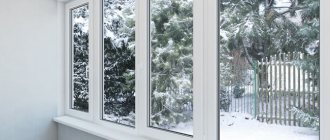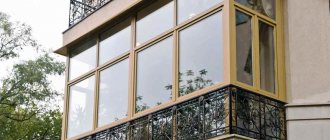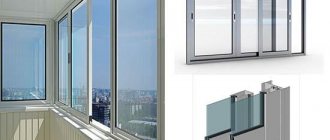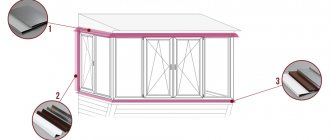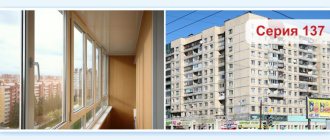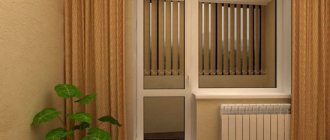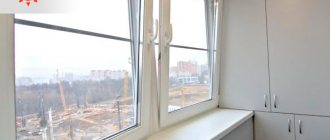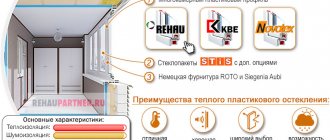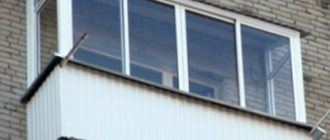Most modern apartments have one or more balconies. With a competent and thoughtful approach to the arrangement, the loggia can be turned into a cozy place to relax, a small office, or simply expand the adjacent space. The glazing of the balcony will allow you to use it comfortably in any weather, and will also protect your home from precipitation, street noise and dust.
The glazing of the balcony will add several square meters of usable space, which can be used at your discretion
Important points in the glazing of a balcony or loggia
Before deciding on the need to glaze the loggia, you should find out all the features of the procedure: how to glaze the balcony in such a way that the work is done efficiently and at a favorable cost.
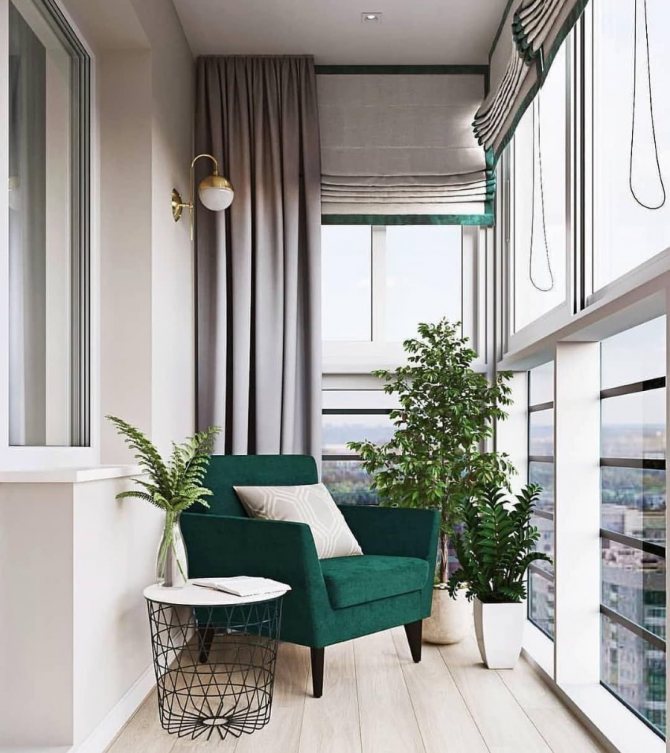
First of all, you need to decide whether the balcony will be insulated or you will be satisfied with simple glazing
Depending on the type of glazing, different profile materials are used: wood, plastic or metal. You should also determine which glass units will be used. The higher their quality, the more expensive they will be.
When selecting material and insulating glass units, it is recommended to take into account their characteristics. For example, when installing heat-insulating glass units, it will be impractical to use an aluminum profile.
To determine the approximate glazing area, you need to know the width and length of the balcony, as well as the height from the side of the loggia to the top. The price and volume of work will depend on the results obtained. For glazing, it is best to contact specialists who have positive reviews and long-term experience. A large number of photos of glazed balconies can be found on the net and you can choose the option to your liking.
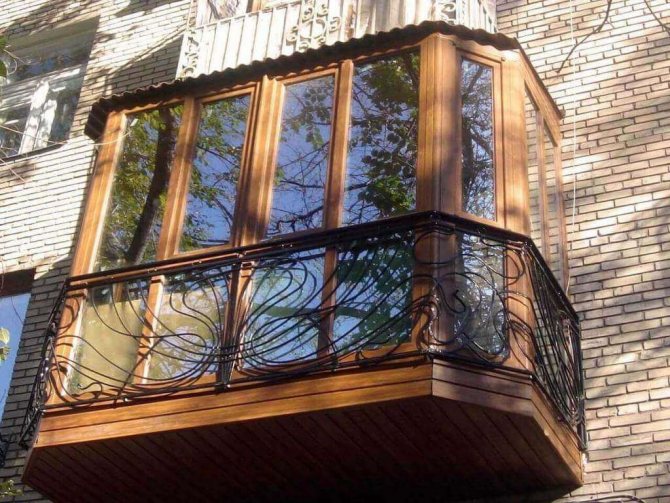

The glazed balcony not only looks neat, but is also protected from all weather conditions
Features of installation of aluminum double-glazed windows
The upper end of concrete parapets is usually leveled using boards before installing the profiles. At the same time, such material is fastened most often by means of long self-tapping screws. The rules for installing aluminum double-glazed windows are usually followed by the following:
- anchor plates, through which the profiles will be connected to the ceiling of the loggia, are mounted in increments of a maximum of 40 cm;
- before attaching the profiles to the board leveling the end of the parapet, a window sill and an ebb is mounted;
- the joints between the visor and the frame, the profile and the ebb, after installing the windows, must be treated with a sealant and be absolutely impervious.
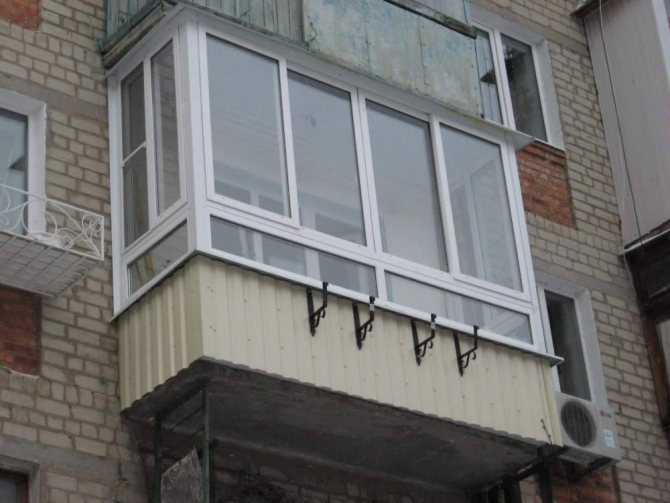

After inserting into the base of the sliding doors, the master must definitely check how easily they open and close. Of course, when installing double-glazed windows on the balcony, the building level must be used. It is necessary that all elements in such a structure are strictly vertical and horizontal. Otherwise, soon the apartment owners will certainly have problems associated with poor sealing of the balcony, as well as opening and closing the doors.
Types of doors for the design of a balcony or loggia
Depending on the planned design of the loggia and its functions, it is necessary to choose the best option for the shutters. For active sashes, swing and sliding mechanisms are most often used, which are suitable for any of the profile materials.Swing-and-swing systems are also popular, which have an optimal cost and are suitable for balconies of various sizes.
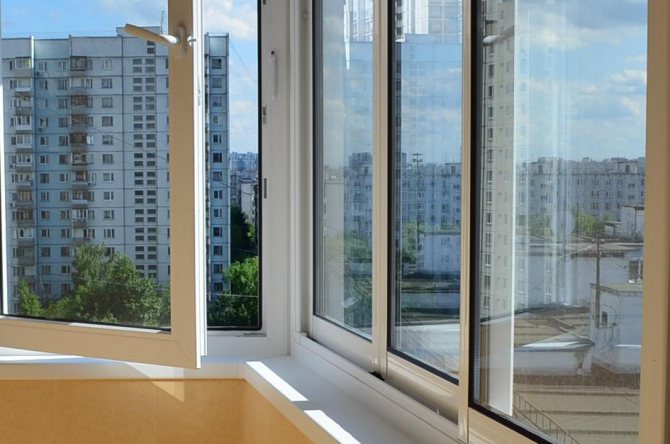

If necessary, the sash opening systems can be combined, for example, the end of the balcony can be closed with a hinged structure, and the front part with a sliding system.
Swing doors
Their mechanism consists of a handle and a hinge, thanks to which the window can be opened inward or outward (depending on the type of fittings). Such flaps swing open in a horizontal plane. As a modern addition, blinds can be used, which make it possible not to install a stationary vertical impost on adjacent sashes.
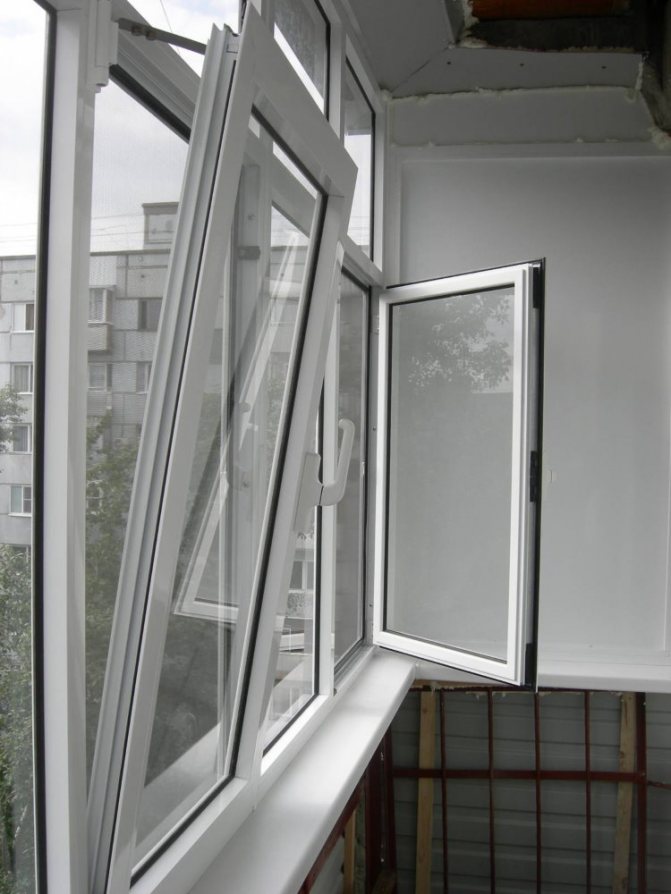

Swing leaves can be produced in a conventional pivoting version or with a swing-out mechanism
Swing sashes are often complemented by such a detail as "scissors", which, when the handle is turned upwards, deflects the sash by a certain angle in the vertical plane. The combination of these devices is called a tilt-and-turn mechanism and is used in the glazing of most modern windows.
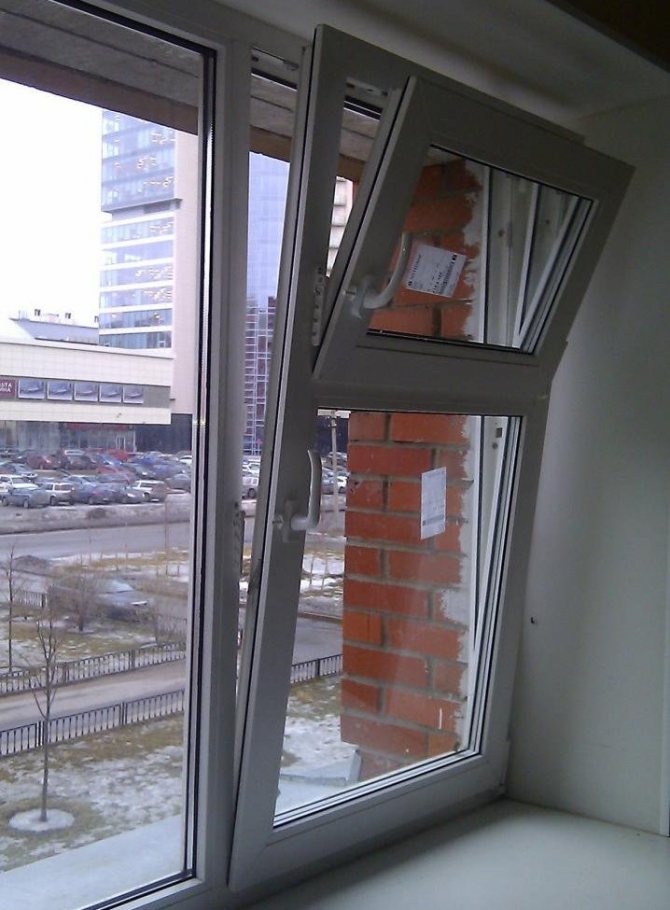

Also possible is a solution with a window in the upper part of the sash
The swing mechanism in glazed balconies has the following advantages:
- affordable cost;
- the possibility of ventilation without fully opening the windows;
- free access to the back of the glass units;
- the possibility of alternating active and "blind" valves.
For swing structures, a wide variety of fittings are used, which do not require special care.
Sliding sashes
The sliding window mechanism is based on guides and carriages with rollers moving in grooves. The flaps slide easily parallel to each other in the frontal plane.
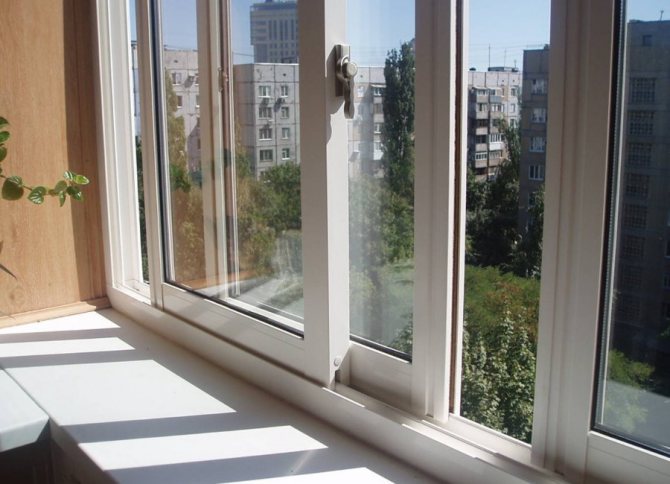

Sliding doors are available in both plastic and aluminum
Among the advantages are:
- save space and make it possible to use on narrow balconies;
- provide comfortable ventilation;
- have a stylish appearance.
Giving preference to sliding windows, you should take into account the possibility of access to the back side of the sashes. Sometimes this will require additional steps.
Sliding mechanisms are perfectly compatible with metal and aluminum structures, and are also suitable for warm glazing.
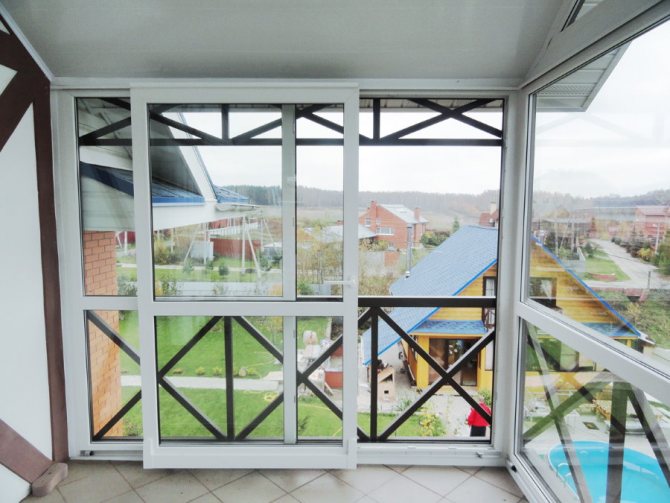

Sliding glazing saves space and looks solid
Types of balcony and loggia glazing
When choosing the type of balcony glazing, it is important to take into account such a factor as the need to preserve heat in the room or its absence. There is cold and warm glazing, each of which has its own characteristics and advantages.
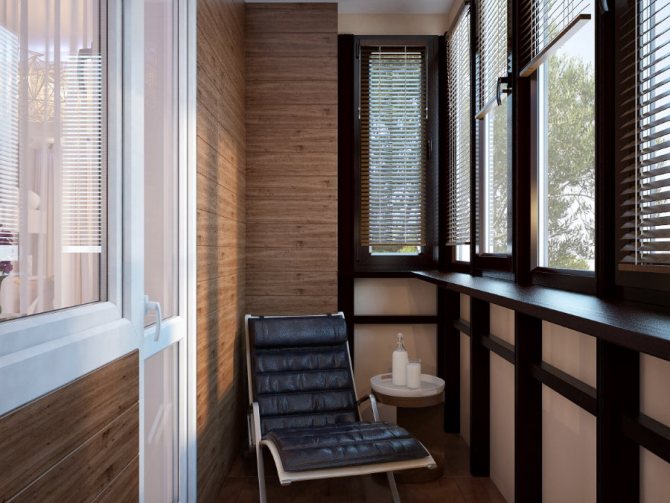

The cost of the upcoming work largely depends on the type of glazing chosen.
The nuances of cold glazing
When using this type, it is not required to purchase insulation and other expensive materials. An aluminum profile and the simplest glass unit are perfect for cold glazing. This option is used in old buildings, since it is lightweight and does not exert a load on the slab.
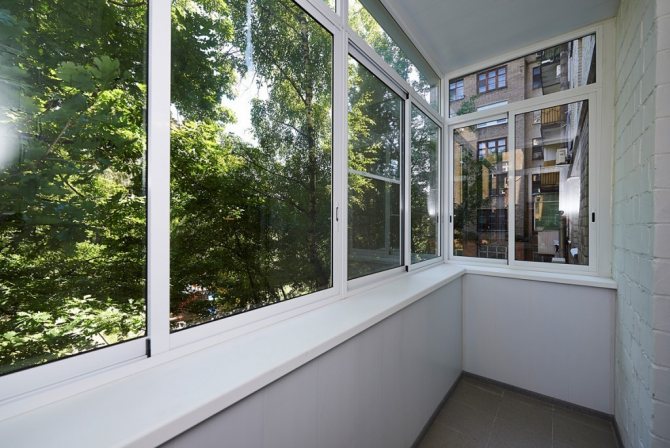

Cold glazing is the most inexpensive option for improving the balcony
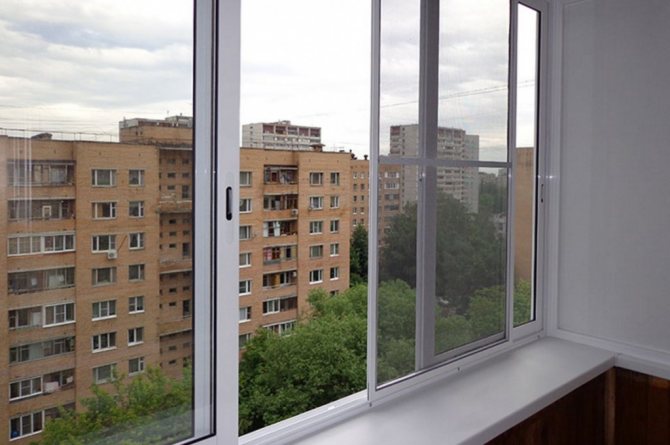

For cold glazing, aluminum sliding systems are most often used.
The nuances of warm glazing
A warm glazed loggia can be used at any time of the year, but the cost of the structure that is used with this option will be much higher. When performing warm glazing, high-quality multi-chamber double-glazed windows and materials for insulating floors, ceilings and walls are used.
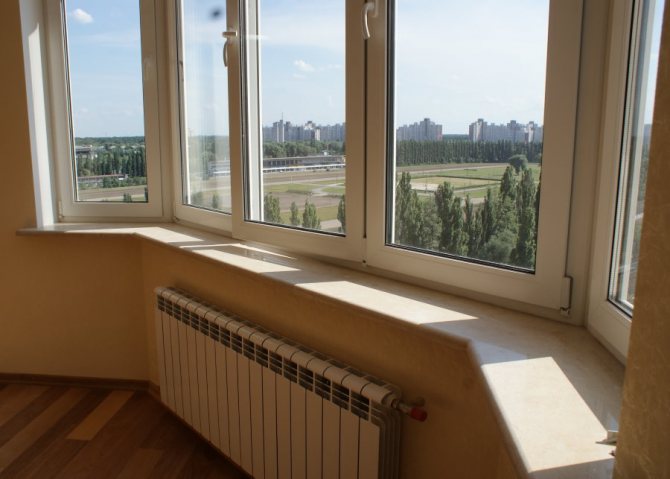

When choosing this type of glazing, you will get a warm and cozy balcony where you can organize an office, a relaxation room or a gym.
Disadvantages of plastic windows
The disadvantages include the following features:
- Greater weight compared to aluminum balcony block.Therefore, the load-bearing capacity of the floor slab must be taken into account. Unfortunately, in old houses it is not always possible to install plastic windows on the balcony.
- Good tightness of windows turns into poor ventilation of the premises. The problem is partly solved by installing micro-ventilation systems in the window unit. And the best would be to use an air conditioner that can maintain the desired indoor climate.
- Light transmission will be lower due to wide frames. Condensation can form in the event of sudden temperature changes.
- High requirements for installation accuracy. Failure to comply with the technology during installation entails increased wear and tear and early window failure.
- All PVC products have the ability to accumulate static electricity and attract dust and dirt to their surface.
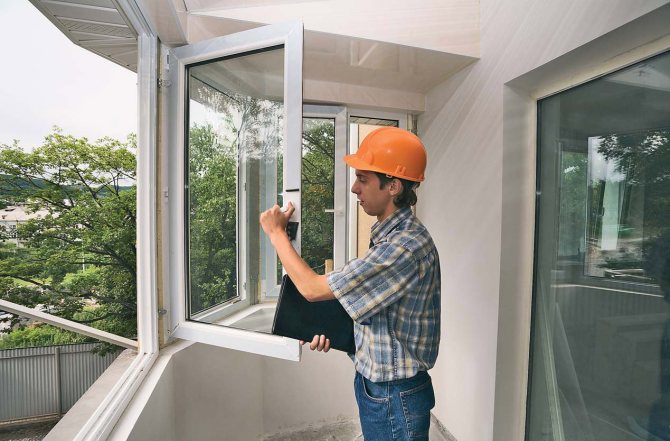

Glazing materials
The balcony can be glazed in various ways: classical, in which the frame is installed on an existing parapet, or French, in which the parapet is dismantled and a floor-to-ceiling window is installed. For the manufacture of profiles, various materials are used, which include wood, metal, plastic.
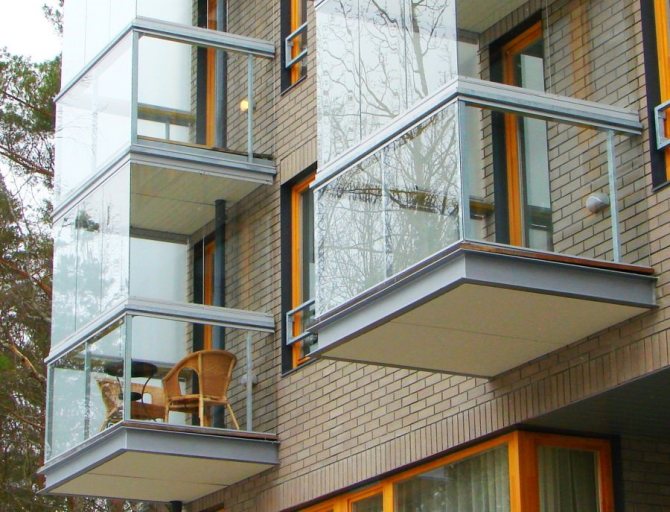

French glazing is a floor-to-ceiling window construction
Pvc
The most popular glazing option, which has many advantages:
- No installation restrictions.
- Various degrees of thermal insulation and the number of glasses.
- The presence of heaters.
PVC is resistant to environmental influences, provides an optimal level of tightness and does not require special maintenance.
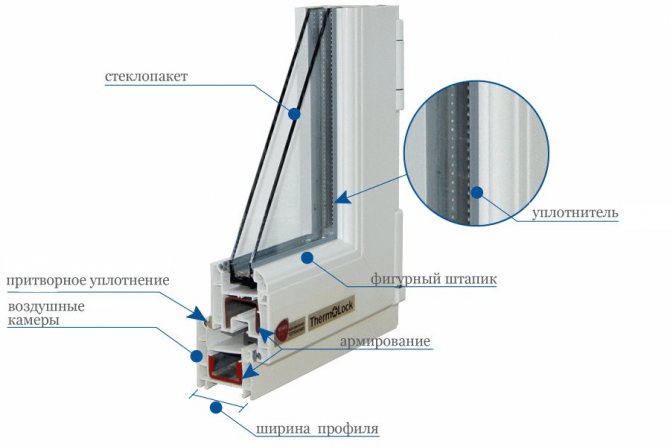

PVC window consists of frames and sashes made of a multi-chamber profile reinforced with steel elements
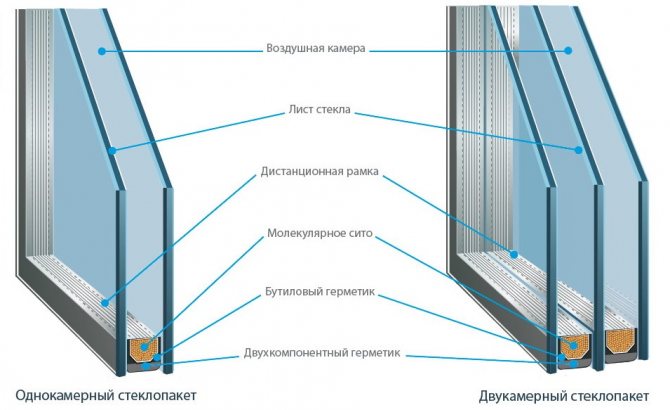

Single or double-glazed windows are installed in frames and sashes, providing a certain level of thermal conductivity
Wood
The wooden profile is the most environmentally friendly material with high quality, good thermal insulation performance. With the help of modern technologies, wood is processed with special means that increase its service life several times.
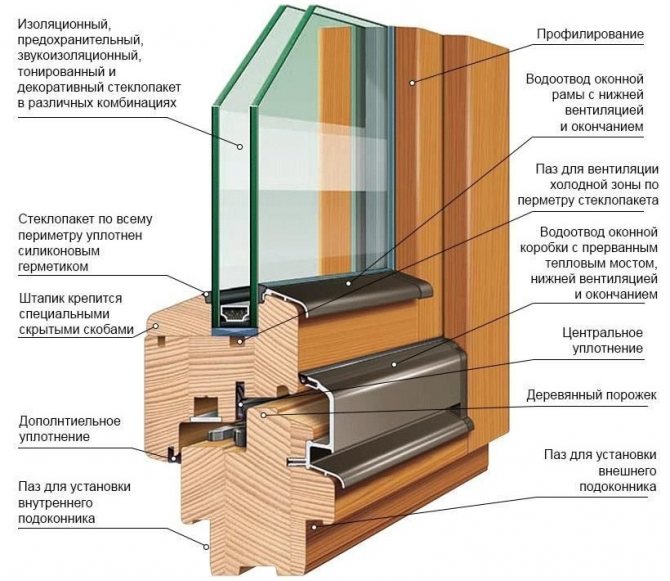

The device of a modern wooden euro-window
The cost of a wooden profile is significantly higher than other materials used for glazing.
Aluminum
Typically used for cold glazing systems. When warm, it is used together with a thermal bridge. Differs in lightness, durability, and a high level of environmental friendliness. The cost of such a profile is several times higher than that of PVC.
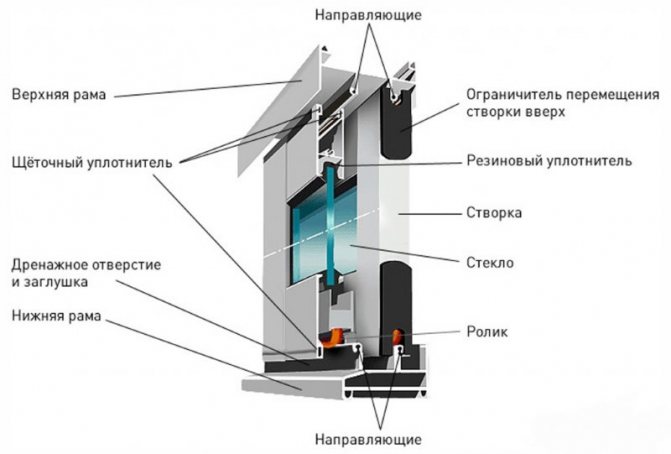

Installation of "cold" aluminum sliding window
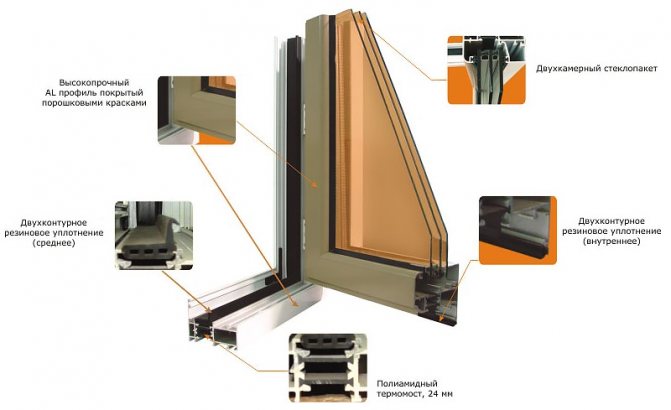

Arrangement of a "warm" aluminum swing-type window
In addition to the listed materials, steel profiles or frameless glazing techniques are sometimes used, in which the glasses are not inserted into the frame, but are attached from below and from above to the profile.
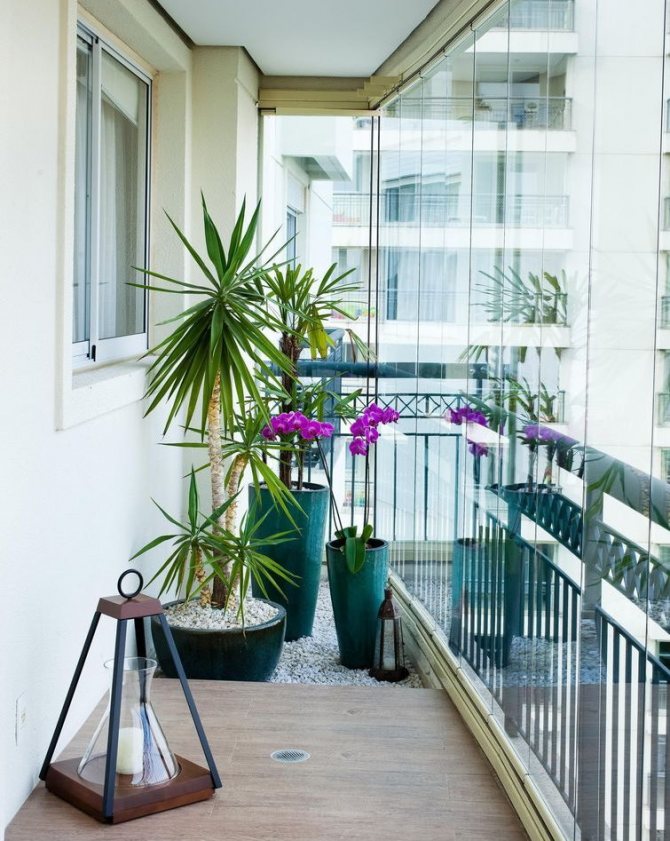

With panoramic glazing, even a small balcony looks much more attractive
Why you need to glaze the facade
There are several good reasons why you should think about glazing a balcony or loggia with a roof:
• If you want to protect your balcony from adverse environmental conditions, precipitation in the form of rain or snow, then this type of arrangement will be the best way out.
• If the slab of the balcony located on the top floor does not completely cover your balcony, then glazing with a roof will be the most appropriate way out.
• To strengthen the structure, increase the strength and durability, it is recommended to use an aluminum profile facade glazing.
This situation is quite common. Glazing of an open space with a roof is possible in two main versions:
• The roof is fixed to the blocks of the balcony itself or to the wall.In this case, it is imperative to use a reinforced profile to increase strength. The advantages of this method can be fully attributed to the affordable cost, durability and at the same time ease of the mounted structure, ease of installation. But a relative disadvantage is that glazing with a dependent roof is not applicable on wide balconies.
• An independent roof in the form of a cantilever or support-post roof, which is mounted to the wall of the house. The advantages include the fact that there are no restrictions on the width of the balcony.
Both of these methods are applicable if you want to order the glazing of a one-room apartment. To determine the final choice, you should think about design solutions that are right for your situation.
What are the advantages of operating a glazed balcony or loggia?
Balcony glazing is a great way to increase living space. Provided that high-quality double-glazed windows with an increased level of thermal insulation are installed, it is possible to increase the living space by means of a balcony or loggia.
At the same time, damage to property and wear and tear of the most open premises under the influence of precipitation are completely excluded. Glazed balconies are often used as an original greenhouse or winter garden.
It is important that the plastic windows used for glazing meet the safety criteria, and their technical characteristics must ensure tightness, high-quality heat and sound insulation.
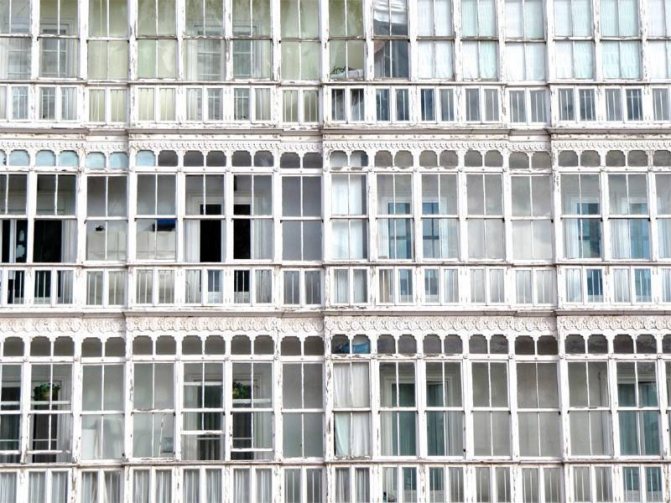

What design solutions are possible with roof glazing?
The device of glazed roofs on a balcony or veranda is possible in the following versions:
• Transparent glass canopy is the simplest and most economical option.
• Dome - perfect for a classic interior.
• Roof - the most robust and durable construction.
• Skylight - an original way of glazing the roof.
Deciding which form of glazing you prefer for your apartment should take into account the architectural features of the house. But they all certainly have common advantages:
1) Protect from moisture, wind and other environmental factors.
2) Withstand significant loads, which is an indisputable proof of strength.
3) The system of condensation and water drainage after rain prevents the appearance of excess moisture both outside and inside the roof.
4) Resistant to mechanical defects and deformations.
5) A special coating can be applied that protects against ultraviolet rays.
6) Allows you to achieve original design solutions that look fresh and aesthetically pleasing.
How much does the glazing of a balcony or loggia cost?
If you are interested in the specific cost of the work, for example, how much does the glazing of a loggia of 6 meters cost, then contact the managers of the company dealing with this type of service. This will help you navigate the cost of glazing.
Finishing the balcony in front of the glazing
Before glazing a balcony, it is necessary to carry out preparatory work on finishing its floor, walls and ceiling. Based on the desired type of glazing, you can select the materials that are optimal for work. In old Khrushchev buildings, it is necessary to finish not only inside, but also outside.
Floor finishing
Not only the aesthetic appearance of the loggia depends on the condition of the floor, but also the comfort of its operation. Depending on the functions that the balcony will carry, the material for the floor covering is selected. Can be used:
- wood;
- laminate;
- linoleum;
- tile;
- PVC tiles;
- carpet.
For warm glazing, you can use any of the proposed options, and for cold glazing, plastic tiles, which are less susceptible to negative environmental factors, will be the best material.
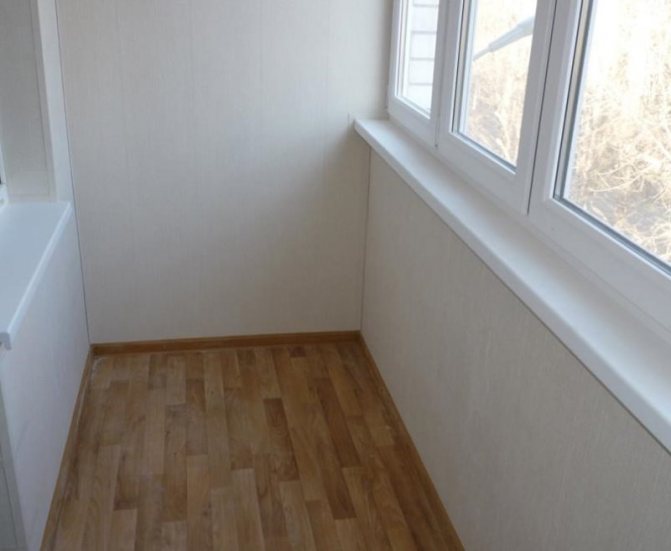

Linoleum is the most economical flooring option for a glazed balcony
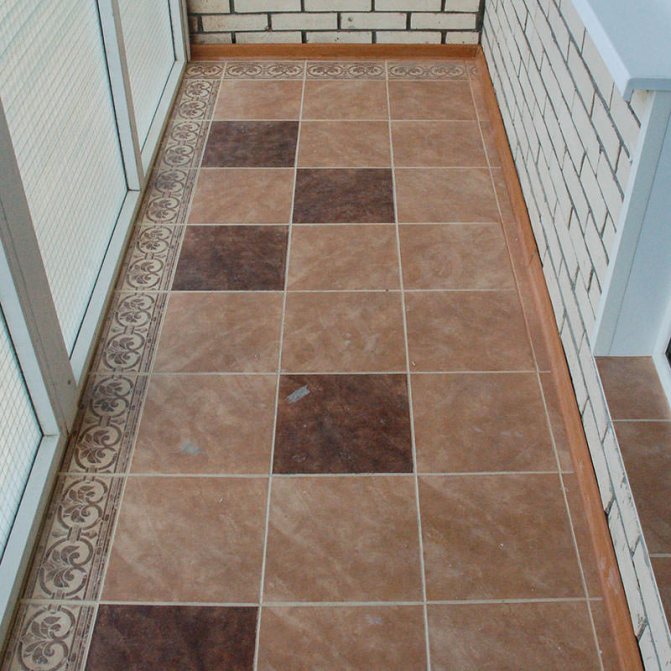

Ceramic tiles are the most durable option
Wall decoration
When decorating the walls, you should also rely on the size of the loggia and the preferred type of glazing. When warm, you can use the following materials for wall decoration:
- Paint and decorative plaster.
- Wooden lining, panel MDF or cork.
- Ceramic tile.
- Plasterboard, plastic panels.
- Stone or brick.
Wall decoration is an important step, which will not only emphasize the interior design, but also protect the balcony from excessive moisture and dirt. For cold glazing, gypsum plasterboards, cork and plastic coatings have proven themselves well.
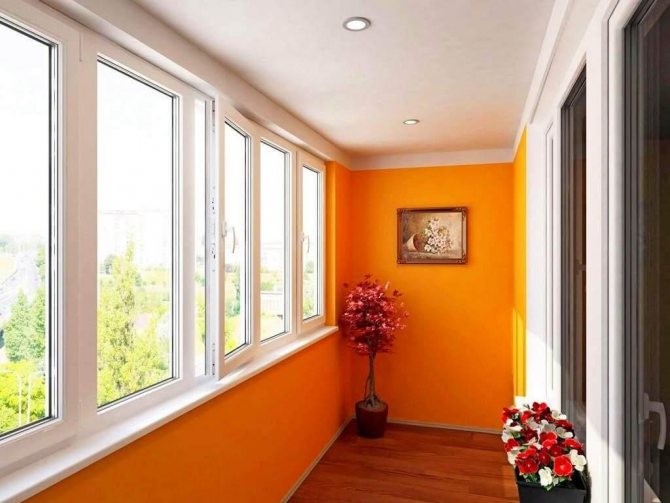

Wall decoration should be chosen based on the style solution of the balcony interior
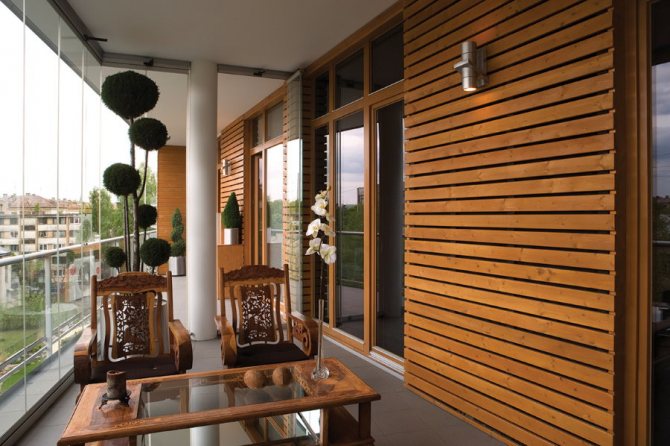

Stylish wood wall decoration on a loggia with panoramic glazing
Ceiling decoration
Competent finishing of the ceiling will insulate the structure and protect it from blowing. It is carried out at the final stage of finishing work, after waterproofing, eliminating cracks and insulation.
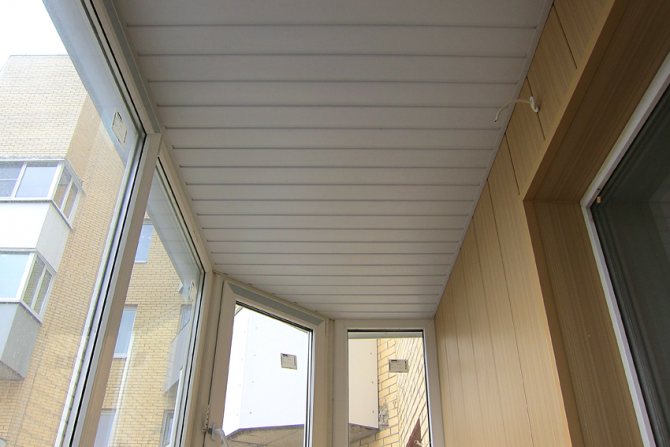

Finishing the balcony ceiling with plastic clapboard
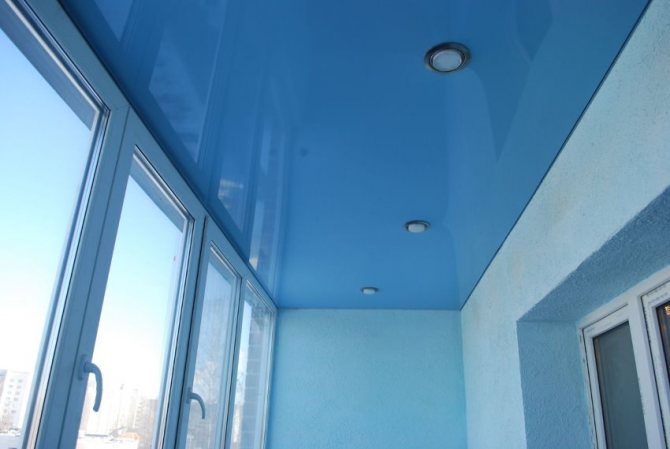

Stretch ceiling with built-in spotlights
For finishing the ceiling, wood and PVC panels, plasterboard sheets, metal rack structures are used. If desired, you can use a stretch ceiling or simply paint it with paint.
When choosing a ceiling covering material, it should be remembered that it should not interfere with the opening of the sashes.
A fully finished and glazed balcony will decorate any home, make it more cozy and comfortable. There are many photos with examples of loggias glazing, which will allow everyone to choose the best option for themselves.
Where to begin
You should be aware that glazing is a redevelopment that affects not only the apartment, but also changes the facade of the building. Therefore, before glazing the loggia, it is required to coordinate this event with the balance holder of the house, with the architecture and urban planning authorities, the SES, and the fire inspection. Glazing of balconies and loggias without permits entails litigation, most likely, glazing is recognized as a violation, you are obliged to return the appearance of the building to its original form, and you will also pay a fine for "amateur performance".
Today, glazing of balconies and loggias is almost everywhere. Therefore, contact the HOA, perhaps a typical glazing project has been developed for your house. Or buy project documentation from neighbors who have already glazed the loggia, but you will have to go through all the stages of approval yourself.
